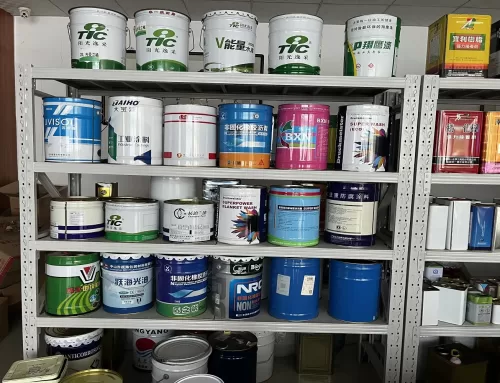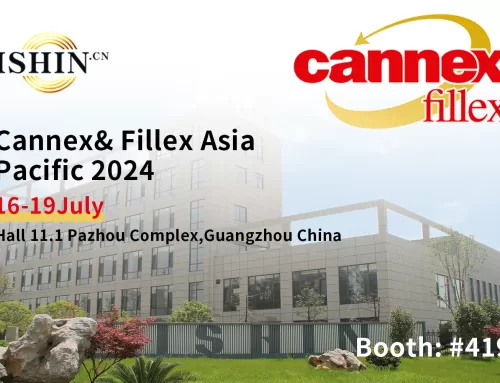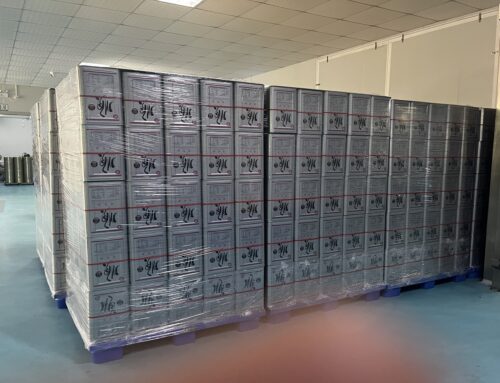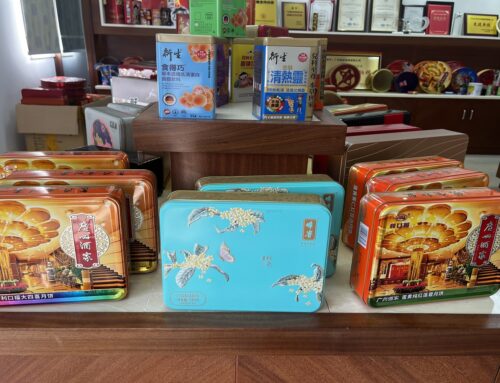The printing and coating production lines of small iron printing enterprises generally have one coating and one printing or one printing and two coating, which have the characteristics of “aging equipment, many production varieties and small batches, and frequent adjustments for production”, etc. At the same time, the strength of the enterprise is not very strong.
At the end of 2018, many provinces followed up with municipalities directly under the Central Government such as Beijing and Tianjin, and strictly formulated new local environmental protection regulations. For small printing and coating companies, this winter is really cold. Under the high pressure of environmental protection in the last winter, many small iron printing plants in Tianjin, Hebei and other places have experienced the pain of “reorganization, suspension or closure”. Now, where will more small iron printing enterprises go?
Environmental protection is under great pressure, and small enterprises should spend the winter with a two-pronged approach
In response to the above problems related to the life and death of enterprises, business operators should take two-pronged measures.
First, clarify the environmental protection requirements of the location of the enterprise. In general, the national standard GB16297-1996 can be referred to, but the local standards issued by Beijing, Tianjin, Jiangsu, Hebei and other places are much stricter than the national standard. Enterprises should choose a suitable one from the three types of VOCs treatment technology routes of catalytic combustion furnace, direct combustion environmental protection furnace and regenerative thermal oxidizer (RTO) detailed below according to their own product characteristics, equipment performance, and the environment of the factory location. environmental protection equipment.
Secondly, according to the company’s own situation, the equipment with outdated production capacity should be transformed and upgraded, or the old ones should be eliminated and the new ones kept. At the same time, to update some production lines and improve the overall operation capacity of the production line, we can seek customized solutions from suppliers including Huayu Company, so as to use the limited funds as much as possible to improve the competitiveness of enterprises.
Catalytic burner
Catalytic combustion furnace with heat recovery device (Figure 1), as a relatively mature environmental protection equipment, is widely used in coating lines.
Working principle The gas containing organic solvent is heated to the temperature required for catalytic combustion (300°C~400°C), and then contacted with the catalyst to burn into harmless, odorless CO2 and water vapor, and the waste heat is reused for coating. The heating chamber of the production line drying room. The equipment mainly conducts catalytic combustion treatment of organic solvents such as triphenyl volatilized in the production process of coating iron. It should be noted that, after using the combustion heat energy recovery system, the coating products in the drying room will not turn white when boiled, and there will be no ash in the drying room and yellowing of the white paint.
Precautions The operating temperature of the catalytic combustion furnace is lower, so the thermal strain and oxidation in the device are easier to control than the direct combustion method. Before selecting the catalytic temperature, it is necessary to understand the organic components in the organic waste gas. It cannot be generalized, otherwise it is easy to cause incomplete oxidation, so that the particles of the organic solvent are adsorbed on the surface of the catalyst carrier, and the activity of the catalyst will decrease over time. affects the purification rate.
The catalyst mainly uses cordierite honeycomb ceramic body as the first carrier, γ-Al2O3 as the second carrier, and precious metals Pt, Pd, etc. as the main active components, and is prepared by the method of uniform distribution with high dispersion rate. There is a direct relationship between the precious metal content.
When the catalytic device does not reach the ignition temperature, it is strictly forbidden for organic waste gas to enter the catalytic bed, otherwise the catalyst will be polluted, resulting in a decrease in catalytic activity and a shortened life. In addition, this technology is not suitable for the treatment of exhaust gas containing ammonia components.
Six advantages
First, under the premise of correct selection of parameters, pre-treatment and operation according to regulations, it is feasible to extend the life of the catalyst – generally 1 to 3 years.
Second, the catalytic combustion heating device uses natural gas, the internal combustion temperature is controlled below 400 ℃, and NO2 is not emitted, that is, secondary pollution will not be generated.
Third, energy saving. Its ignition temperature is 220°C~320°C. Generally, when processing mixed organic waste gas with a concentration of 2000mg/Nm3 or more, there will be a heat release of 350°C~450°C. At this time, the ignition temperature heating system of catalytic combustion will be automatically turned off. Through the utilization of chemical heat energy inside the catalytic combustion device, the entire device reaches thermal equilibrium, and the outlet of the catalytic device emits purified hot air at 280°C to 350°C. In the coating and curing device, the drying process temperature of the coating and curing device is controlled by the thermal temperature measurement point, and the heat required for the hot air circulation and the fresh air supplementary circulation of the coating and curing device is supplemented. At this time, most of the coating heating system will be Automatically shuts off, thus saving the user a lot of fuel or electricity bills. Generally, one coating and one printing consumes about 70m³/h of natural gas, and two coating and one printing consumes about 100m³/h of natural gas, saving more than 20% of energy.
Fourth, among the three types of VOCs treatment technology routes, catalytic combustion equipment has the lowest investment cost.
Fifth, at the same time, the equipment is turned on together with the printing and coating drying room, and the configuration is flexible and not affected by the daily working hours.
Sixth, after the exhaust gas is treated, the air discharged can meet the national and local standards through third-party testing.
four deficiencies
First, during use, its activity will gradually decrease, and some components in the exhaust gas may cause catalyst poisoning and thus fail. In addition, as environmental protection requirements become stricter, its effective time will become shorter and shorter, causing users to increase maintenance costs due to faster replacement frequency.
Second, hot air recovery may have a certain impact on the quality of printed and coated products, so it is not suitable for high-end products. Also, the choice of paint is important.
Third, it is impossible to be smokeless and odorless. After the air is treated, white smoke will still be seen at the discharge port, but the test can pass and the odor is alleviated, but it cannot be cured.
Fourth, due to heat recovery, the dust and impurities generated in the environmental protection furnace may circulate in the drying room, which reduces the cleanliness of the drying room. Over time, it may affect the quality of the product, so it is necessary to increase the maintenance cost of the equipment.
Direct combustion environmental protection furnace
The environmental protection furnace for direct combustion waste gas treatment with heat recovery device (Figure 3) can make full use of the heat energy released when decomposing organic waste gas, thereby reducing the energy consumption of the entire system, and is most suitable for processing a large amount of high-concentration organic waste gas.
Working principle When the drying room is working, a large amount of organic waste gas will be generated in the heating section of the drying tunnel. The high-pressure fan on the environmental protection furnace will introduce the waste gas into the heat exchanger on the environmental protection furnace to increase the temperature, and then enter the environmental protection furnace. Concentrate inside the combustion chamber. A windshield is installed around the burner to increase the pressure of the exhaust gas flowing through the burner cone and the extension cover to ensure the quantitative mixing of the gas and the exhaust gas. Next, the turbulent flow and intense mixing conditions in the mixing cone of the burner cause the temperature in the combustion chamber to rise rapidly, ensuring complete combustion of the exhaust gas.
Generally, the temperature in the combustion chamber of the environmental protection furnace is controlled at 720 ℃ ~ 750 ℃, the solvent in the exhaust gas can be completely burned, and the high-temperature gas generated by the combustion will preheat the exhaust gas from the high-pressure fan through heat exchange, and then enter the heat distribution box. The control valve distributes heat to each heating chamber on the coating and printing drying room, and supplies other heat-using units, such as: preheating of the drying room flower stand, mixed heating of the front exhaust pipe and exhaust gas, etc. Finally, the excess hot air is evacuated. It should be noted that the adjustment ratio of the burner output of the direct-fired furnace is as high as 20:1, and the residence time of the organic waste gas in the combustion chamber is 1 to 2 seconds.
advantage
First, the oxidation temperature is 720℃~815℃, and the decomposition rate of organic waste gas is as high as 99%, which meets the requirements of national and local standards, and various indicators including purification rate are superior to catalytic combustion.
Second, the side effects on drying rooms and printing lines are less than catalytic combustion, and food-grade and high-end products can be produced, such as beverage cans, milk powder cans, food cans, etc.
Third, among the above three types of waste gas treatment technology routes, the investment cost of direct combustion furnace equipment is in the middle, and the service life of the equipment is longer.
Fourth, the heat recovery rate can reach 76%, saving energy consumption. Specifically, the waste gas treatment of one coating line produces heat recovery and supplies one coating and one printing, and the gas consumption is about 70m³/h; the waste gas treatment of two coating lines is reused for the second coating and one printing, the gas consumption is about 100m³/h, and the energy saving is 20%. about.
Three major deficiencies
First, the recycling of hot air still has some side effects, but it is better than catalytic combustion. The direct-fired furnace cannot completely eradicate some chemical substances volatile in individual coatings, resulting in problems such as flower frame printing and belt printing in printed and coated products. Therefore, it is necessary to choose coatings carefully when using this equipment.
Secondly, it is still impossible to achieve no smoke and odor. White smoke and a small amount of odor can still be observed at the discharge port, but the effect is significantly better than that of catalytic combustion.
Third, the energy consumption is slightly higher than that of catalytic combustion.
In general, for areas such as Tianjin, Beijing, Hebei, etc. that have begun to implement local standards, this equipment has comprehensive advantages for small enterprises in terms of investment cost and performance.
Regenerative Thermal Oxidizer (RTO)
Due to its low operating cost and high organic waste gas treatment efficiency, RTO is widely used at home and abroad for medium and low concentration (100~3500mg/m3) waste gas treatment in coating, chemical, electronics and other industries.
Working principle The organic waste gas is heated to above 760℃, and the VOCs in it are oxidized and decomposed into CO2 and water. The high-temperature gas generated by oxidation flows through a special ceramic regenerator, and the heat stored in the ceramic body is used to preheat the subsequent organic waste gas, and then the flue gas whose temperature has dropped significantly will pass through the heat recovery system or other media to generate heat. exchanged and finally discharged into the atmosphere.
The ceramic regenerator is divided into two or more chambers, and each regenerator undergoes procedures such as heat storage, heat release, and purging in turn, and it works continuously. After the regenerator “releases heat”, part of the qualified clean gas should be introduced to purge the regenerator (to ensure the removal rate of VOCs), and the “regenerative” procedure can only be entered after the purge is completed.
Matters needing attention When enterprises choose RTO, the reference value of air volume and organic matter concentration provided to the equipment designer needs to be comprehensively considered. If the air volume is too large, the concentration of VOCs is too small, and the energy consumption is high; on the contrary, if the air volume is too small, the concentration of VOCs is too large, and safety accidents such as tempering and flash explosion are likely to occur in the furnace. explosion accidents due to factors such as Therefore, the air volume should be appropriately enlarged in the design to reduce the safety risk. In addition, means such as frequency conversion control can also be used to adjust the air volume of the fan according to the production situation, thereby reducing energy consumption.
RTO is usually suitable for the following situations: large amount of organic waste gas treatment air volume; organic waste gas requires higher oxidation temperature; waste gas contains substances that are toxic to catalysts; does not require a large amount of heat recovery.
Three advantages
First, the temperature of the regenerator can reach up to 850 ℃, so the purification rate of exhaust gas can be as high as 99.5% or more, and the effect is obviously better than that of catalytic combustion furnace and direct-fired environmental protection furnace.
Second, the drying room is relatively clean because there is no heat recovery, and the coated products will not have quality problems such as yellowing.
Third, the equipment has a long service life and does not require much maintenance.
Two major deficiencies
First, the one-time investment in RTO is relatively large. For enterprises with a certain scale, strict product quality requirements, and 24-hour continuous operation, RTO is undoubtedly the first choice. But it is more suitable for continuous production. The more production lines, the lower equipment investment and operating costs. Small-scale printing and coating companies often produce many types of products and small batches, so choosing RTO may not be suitable at present.
Second, the production line cannot be opened separately, otherwise it will easily consume energy.
Summary of suggestions for selection of waste gas treatment equipment
Enterprise operators should select equipment according to their own characteristics and environmental conditions. Catalytic exhaust gas treatment is preferred when environmental conditions permit, but this is not a long-term solution.
Under the general trend of stricter environmental protection, it is better to choose a direct-fired exhaust gas environmental protection device for one painting and one printing. If the external environment is very demanding, consider RTO as much as possible.
What needs to be emphasized is that companies must find reliable suppliers before investing, and they are fully technically connected for tailor-made products. Only by choosing the right equipment can an enterprise embark on the road of sustainable development.




